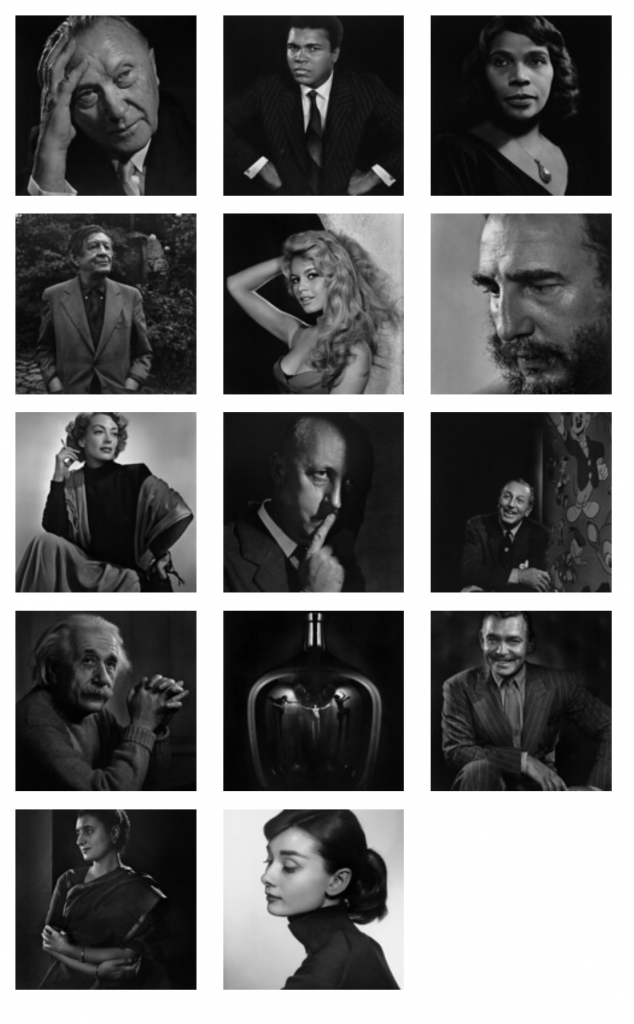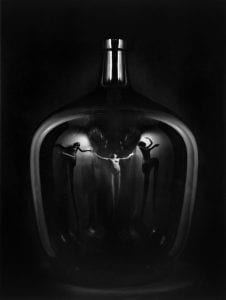From August 19-November 23, 2010
David Travis, Curator
This exhibition celebrates the centenary of the birth of one of the greatest portraitists in the history of photography. It may be said that, through his portraits, Karsh helped to create our collective visual memory of Winston Churchill, Marian Anderson, Albert Schweitzer, Ernest Hemingway, Albert Einstein, and many others.
Yousuf Karsh learned photographic portraiture in the late 1920s the way 19th-century practitioners had: as an apprentice. His concern for the sitter’s character and worth along with his exquisite manners brought him modest success first in the studio in Ottawa, Canada, which he operated from 1932 to 1992. Having become the favorite photographer of Canadian politicians, in December 1941 he was asked to photograph Winston Churchill after one of the Prime Minister’s most famous speeches. That defiant and scowling portrait became an instant icon of Britain’s stand against fascism. From that time on, Karsh became internationally renowned and a long list of statesmen, artists, musicians, writers, actors, and celebrities sat before his camera.

Throughout his long career, Karsh put aside a selection of his own favorite prints of his favorite subjects that are now in the collection of the Art Institute of Chicago. These prints, drawn from that collection, along with some additions made by former curator of photography David Travis, are being shown here together for the first time ever.
This selection and the accompanying catalogue by David Travis constitute a critical re-evaluation of Karsh’s artistic development and achievement, combining aesthetic ideas ranging from Ralph Waldo Emerson, Federico Garcia Lorca, Wallace Stevens, and Albert Camus with the history and technique of photography. The text also includes a discussion of the photographer’s admiration of individuals of high achievement and his notion of what constituted a genuine hero, which was affected by his optimistic outlook on society, even in the darkest days of World War II. While styles in portraiture changed after the war, Karsh’s images, with their engaging lighting and indelible character study, consistently display one of the most recognizable, signature styles in portrait photography.
This traveling exhibition is organized by Curatorial Assistance.
An accompanying exhibition catalogue is available at Amazon.
Also on view: Ties That Bind: Family Portrayals
